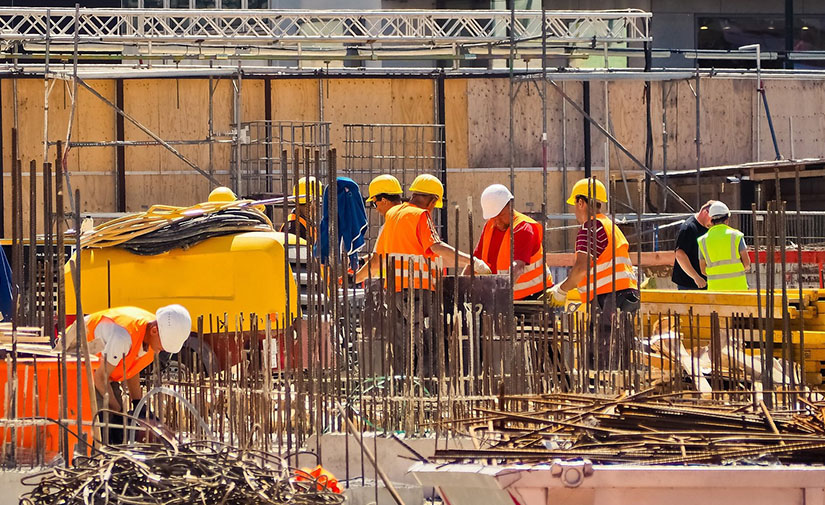Construction companies continue to deal with the challenges COVID-19 delivered over the past couple of years, but they also face additional issues unique to the sector.
Despite the pandemic, the number of construction companies being established is rising. In the two years to June 2022, 48,233 construction companies were set up, bringing the total number operating to 445,200. This compares to just over 397,000 operating on June 30, 2020. Many of these companies were formed following the introduction of the federal government’s $25,000 HomeBuilder grant.
However, the sector faced a number of challenges as a result of COVID, and while 953 construction companies were declared insolvent during 2020-21, this rose to 1282 in 2021-22 – a result attributed to the withdrawal of government support measures. In fact, last year, construction companies accounted for 26% of businesses that entered into insolvency.
Key challenges
As this earlier JS Matters article highlighted, the number of builders entering into external administration continues to rise, with COVID shutdowns, supply problems, labour shortages and delayed projects, cited as the main reasons. Master Builders Australia CEO Denita Wawn says the sector understands the severity of the challenges it faces and wants the Federal Government to align all its economic levers to ensure it’s pulling in the same direction as the Reserve Bank.
“Policy initiatives, including clearing the visa backlog for migrants and increasing the flow of migration, support for increased digitalisation, particularly in industries where uptake is low, such as building and construction, and for increasing the numbers of women in secure well-paid occupations in our industry, are just a few examples of measures that will boost productivity and growth,” she says.
She adds the warning that rate rises will continue, followed by an economic slowdown is of “grave concern”. “In the residential building sector, builders who have borne the brunt of inflationary pressure for many months now face reduced demand for new homebuilding.”
Emerging issues include the fact many builders signed fixed-price contracts with clients and higher inflation is having a huge effect on their margins.

Meanwhile, Jirsch Sutherland Partner Andrew Spring says a unique issue for the sector is if building and construction companies are facing financial challenges, they can’t tap into the formal restructuring regime “until it’s too late”.
“If companies try to restructure via an external administration, then they may leave themselves unlicensed and uninsured,” he says. “For example, if they undergo a Voluntary Administration or Small Business Restructure (SBR), they may no longer be compliant for insurance purposes.”
Spring says because of this, construction companies are stuck between a rock and a hard place. “This is probably why a lot of building/construction businesses go to the wall, even though by restructuring they will end up meeting the requirements of the regulators and insurance companies,” he says. “So, it’s a classic Catch 22 situation.”
Spring believes the insolvency regime is more complicated for the building and construction sector than for any other. However, not impossible. He recently undertook an SBR for a building company and says the insurance/license issue was one of the main problems.
“The company had a project that was ready to kick off, and by working with the client to delay the start we were able to implement the restructure and then reinstitute insurance to make sure they were covered,” he says. “Currently, the regulations are onerous, and this causes projects to be delayed. But early and sensible advice can still produce a favourable outcome for all stakeholders.”
How the ipso facto moratorium helps
The industry has received help in the past with changes to legislation. In 2017, Parliament passed a moratorium on reliance by solvent counterparties on ipso facto clauses in Voluntary Administration and creditors schemes of arrangement. This legislation eliminates the immediacy of insolvency clauses in certain contracts. [An ipso facto clause gives a party a right to terminate or modify a contract if certain events take place – the most common event being insolvency. This occurs regardless of whether the other party continues to perform their obligations.]
Within the construction industry, ipso facto clauses were viewed as challenging as they had the power to speed up a company’s downfall when it could have been saved, hence the legislative changes introduced in 2017 that attempt to limit the effect of ipso facto clauses when a restructure could be attempted.
“An extension of the moratorium regarding the clauses to include licensees and insurers would give the building/construction companies peace of mind if they do a VA or Small Business Restructure,” Spring says. “That is, they would still be covered by insurance where they already had a policy in place.”
Call for relief
Meanwhile, a coalition of peak associations and unions associated with the construction industry is calling for the government to implement bankruptcy protections for the industry as insolvencies continue to rise in light of the increasing costs of materials, global competition for workings and supply chain issues.
The coalition of nine industry bodies including the Master Electricians Australia, National Electrical and Communications Association, and Electrical Trades Union, is calling for better protection from bankruptcy and a crackdown on “unfair” contractual terms that unpin the industry’s high failure rate.
Specifically, it wants the federal government to:
- Urgently enact the federal Security of Payment laws to implement the Murray report [The Murray Review into national payment protection for subcontractors called for nationally harmonised Security of Payments laws]
- Strengthen prohibitions for unfair contract terms
- Ensure the government procurement practices support fair contracting down the construction supply contractual chain











